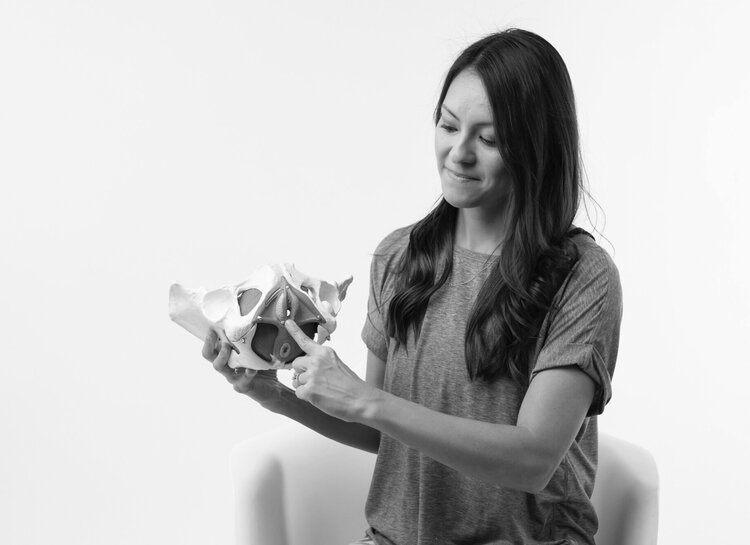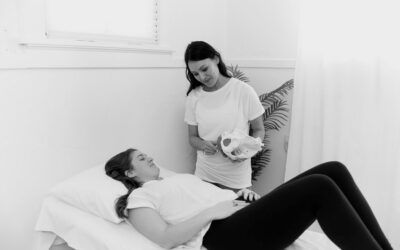Let’s play “guess the diagnosis”:
- You’re feeling a little discomfort in your abdomen and pelvis.
- You’re frequenting the bathroom more often.
- You feel a burning sensation when you pee, accompanied by little to no urine.
- Or, you’re peeing a lot, so much that urine sometimes leaks out on its own without warning.
That’s a UTI, right? Maybe… maybe not!
What’s a UTI?
A urinary tract infection (UTI) happens when bacteria enter the urethra—the tube that takes urine from the bladder to outside your body. According to the Urology Care Foundation, women are more likely to experience UTIs than men. As many as 40% of women will experience a UTI in their lifetime, with 1 in 5 women having more than one.
UTIs are especially common in pregnancy, immediately postpartum, and during menopause. You might also be at an increased risk for a UTI if you:
- Have vaginal intercourse
- Use condoms, diaphragms, or spermicide
- Have a chronic illness like diabetes
Common UTI Symptoms
The symptoms of a UTI are usually hard to miss or ignore. They include:
- Urinary frequency (more than 8 times in a 24-hour period)
- Urinary urgency
- Urinary leakage
- Ability to produce only small amounts of urine at a time
- Pain or discomfort in the abdomen or pelvis
- Bloody or cloudy urine
If your UTI has progressed, you might have additional symptoms like fever, abdominal or back pain, and chills. Most UTIs aren’t complicated: your doctor performs a culture on a urine sample, it comes back positive for bacteria, and they prescribe a short course of antibiotics. If your UTI symptoms are persistent or recurrent, your doctor may prescribe additional treatments.
What Can Cause a Negative Urine Culture but Contribute to UTI Symptoms?
At some point, you might go to the doctor absolutely positive you have a UTI. But when your urine is cultured, it returns negative. HUH?!, you think. Then why does it burn when I pee?! As it turns out, urine cultures aren’t an exact science. You might return a negative culture if:
- Your urine became contaminated during the collection process.
- The pathogens get missed if the bacteria adhered to your bladder and are no longer floating in your urine.
- You have a different pathogen, undetectable by standard UTI cultures.
And, of course, it’s possible that what you have isn’t a UTI! One of the most overlooked contributors to frequent UTI-like symptoms has nothing to do with your urinary tract. Instead, it’s all about your pelvic floor.
Pelvic Floor Dysfunction and UTI Symptoms
The pelvic floor is the group of muscles attached to your pelvis that supports and controls your bladder, rectum, and reproductive organs. These muscles wrap around your urethra, and, on a normal day, help you pee without incident. But when your pelvic floor is too tight and spasms, you get those all-too-familiar UTI symptoms. People with pelvic floor tension often have issues going #1. They experience:
- A need to strain to start a stream.
- Splayed or weak streams.
- Burning.
- Sensations of incomplete emptying.
- A constant urge to go.
- Bladder pain.
Sound familiar? Other symptoms of a tense pelvic floor include:
- Painful sex or sitting too long.
- Painful abdominal muscles.
- Difficulties with pooping, like chronic constipation and hemorrhoids.
Pelvic floor dysfunction and UTIs are a kind of “chicken and egg” situation. A hypertonic pelvic floor—a pelvic floor that’s too tight and prone to spasms—can cause UTIs by not allowing the bladder and urethra to fully empty. This traps urine in the urinary tract, making you more prone to infection. Conversely, UTIs can also cause pelvic floor dysfunction. A stubborn UTI, or multiple in a row, can cause your pelvic floor muscles to tighten. Then, the cycle continues to repeat itself.
How to Relieve UTI Symptoms
UTI symptoms, regardless of their cause, are nothing to sneeze at. Take these steps to relieve your symptoms:
- Always see a doctor to rule out a UTI.
- Apply a heating pad to your pelvis to relieve pain.
- Drink more water to pee more often and flush out those pesky bacteria.
- Drink cranberry juice.
- Decrease consumption of bladder irritants: caffeine, alcohol, carbonated drinks, and spicy food.
How to Prevent UTIs
Keeping your downstairs clean is the best way to keep UTI-causing bacteria at bay. Here’s how:
- Rinse your vulva—the outside of your lady bits—with water every day.
- Never put soap inside your vagina.
- Always pee after sex to flush out any bacteria near the urinary tract.
- Wear cotton underwear, which is more breathable.
- Stay hydrated.
- Change incontinence liners frequently
How to Prevent UTI-Like Symptoms
If you have UTI-like symptoms but you don’t have a UTI, relaxing your pelvic floor may get you some welcome relief. The V-Hive Pelvic Floor Relaxation Series, available only to members, teaches you exactly how to do that.
- Learn stretches to ease pelvic floor tension
- Discover products to relax pelvic muscles
- Understand how to restore pleasure to sex
- Relieve peeing and pooping problems
With The V-Hive Membership, you get access to pelvic floor workouts and relaxation routines you can do from the comfort of home. From strengthening to relaxing, you can access these workouts for free for your first 7 days. Start your free trial now!




